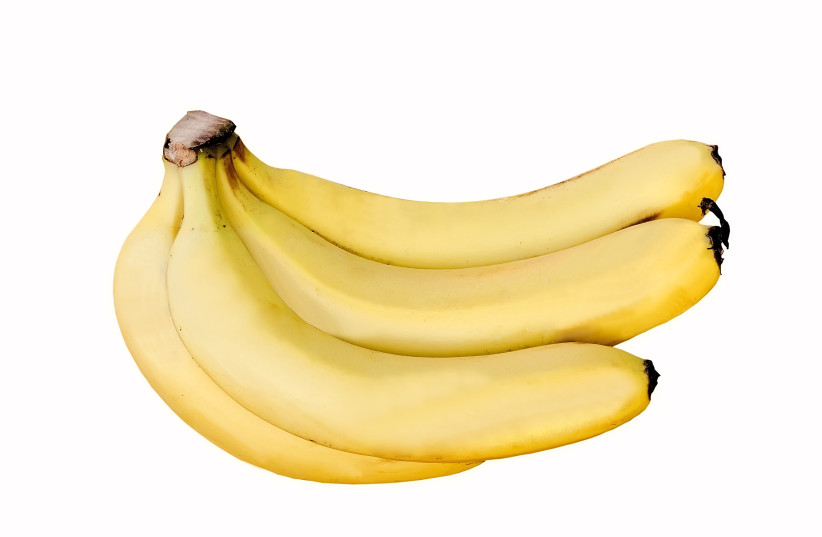 Scientists peel back ancient layers of banana DNA to reveal ‘mystery ancestors’
Scientists peel back ancient layers of banana DNA to reveal ‘mystery ancestors’
JERUSALEM POST STAFF
The study identified a history of genetic engineering, specifically hybridization and a selection for heterozygotes, as mechanisms for the transition from wild to cultivated bananas.
.

Bananas, thought to have been domesticated 7,000 years ago in New Guinea, may have a more complicated history than initially assumed, according a new study from the peer-reviewed Frontiers in Plant Science.
“Identifying the ancestors of cultivated bananas is important, as it will help us understand the processes and the paths that shaped the banana diversity observed today, a crucial step to breed bananas of the future.”
Author Dr. Mathieu Rouard, Bioversity International
Cultivated bananas are sterile and produce seedless fruits. They are descended from wild ancestors which produced seeds, but the connection between the original seed-filled fruits and today’s bananas found in grocery stores is not well understood.
“Here we show that most of today’s diploid cultivated bananas that descend from the wild banana M. acuminata are hybrids between different subspecies. At least three extra wild ‘mystery ancestors’ must have contributed to this mixed genome thousands of years ago, but haven’t been identified yet,” explained Dr. Julie Sardos, a scientist at The Alliance of Bioversity International and CIAT in Montpellier, France, and the study’s first author.
he study identified a history of genetic engineering, specifically hybridization and a selection for heterozygotes, as mechanisms for the transition from wild to cultivated bananas.
Second corresponding author Dr. Mathieu Rouard, likewise at Bioversity International, said: “Identifying the ancestors of cultivated bananas is important, as it will help us understand the processes and the paths that shaped the banana diversity observed today, a crucial step to breed bananas of the future.”
The results of the study bring new light to the geographic spread of wild bananas and its impact on bananas today.
“Breeders need to understand the genetic make-up of today’s domesticated diploid bananas for their crosses between cultivars, and this study is a major first step toward the characterization in great detail of many of these cultivars.”
The future of bananas
The study authors concluded by explaining that their work has direct implications on the evolution of banana crops going forward, as well as conservation, collection and breeding of this modern staple food.
Sardos said: “Based on these results, we will work with partners to explore and genotype wild banana diversity in the three geographic regions that our study pinpointed, with the hope to identify these unidentified contributors to cultivated bananas. It will also be important to investigate the different advantages and traits that each of these contributors provided to cultivated bananas.”
Zawartość publikowanych artykułów i materiałów nie reprezentuje poglądów ani opinii Reunion’68,
ani też webmastera Blogu Reunion’68, chyba ze jest to wyraźnie zaznaczone.
Twoje uwagi, linki, własne artykuły lub wiadomości prześlij na adres:
webmaster@reunion68.com
